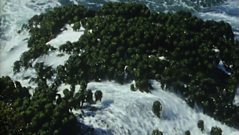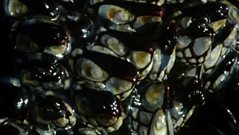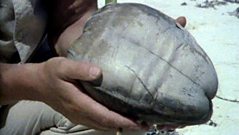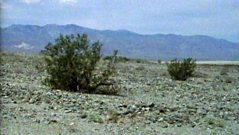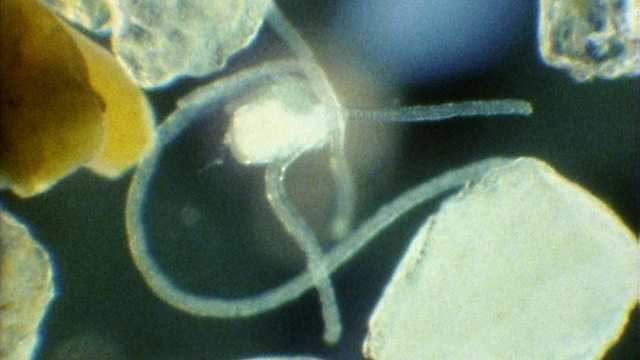
Tiny inhabitants
Living in the microscopic spaces between the grains of sand on a beach are tiny life forms. Speeded up 125 times, the film shows how sand masons rebuild their food-catching tentacles in their ever shifting sandy environment.
As every wave stirs up the surface of a sandy beach, plants can not get a grip on the sand as they can on rocky shores or mudflats. But if the sand grains are not too small and compacted, then each one will retain around it a thin film of moisture - even when the tide is out - inside of which some creatures can live. Microscope shots of the sand reveal tiny worms swimming between the grains of sand, searching for a mate or for edible scraps. Some creatures are only temporary, such as the larva of a certain mollusc. A hydra anchors itself with a long tentacle while a nematode worm uses a gland on its tail to makes glue that helps it keep its position. Sand mason larvae make a tube of mucus which they carry about and cling to using the bristles on their flanks. When it becomes an adult it makes its tube above the sand and adds long tassels to the top to slow down the water so that suspended food particles will fall and can be gathered by the waving tentacles. But the shifting sands mean the tubes must constantly be rebuilt.
Duration:
This clip is from
Featured in...
![]()
Summer, seaside and sunshine
An exploration of the wealth of wildlife that lives in and around the British seaside.
![]()
91热爆 Nature
Be captivated, informed and inspired by the world's wildlife.
![]()
Playing with Time
A collection of clips showing the best in timelapse nature films.
More clips from The Margins of the Land
-
![]()
Palmed off
Duration: 01:45
-
![]()
Mussel beach
Duration: 04:29
-
![]()
Mud larks
Duration: 03:19
More clips from The Living Planet
-
![]()
Ocean Drifters—Worlds Apart
Duration: 01:20
-
![]()
Snare of silk—The Baking Deserts
Duration: 01:48
-
![]()
Furnace flora—The Baking Deserts
Duration: 03:46
-
![]()
Ships of the desert—The Baking Deserts
Duration: 03:17


